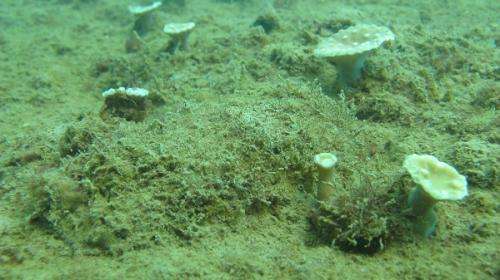Pilbara coral finds refuge on artificial reef

Leftover concrete sleepers and spare rock boulders have proven key to coral communities regaining a foothold in the heavily used Port of Dampier, research has found.
The study, involving Rio Tinto Iron Ore, tested the amount of coral recruitment on an artificial reef (AR) which was constructed from rock boulders from a dismantled seawall and concrete sleepers from an obsolete conveyor.
The 0.6ha artificial reef, located at Parker Point in Dampier harbour, was constructed as an environmental offset for a nearshore coral community which was lost due to reclamation works.
The AR was surveyed at six monthly intervals from August 2007 to February 2012.
Marine science consultancy MScience expert Dr David Blakeway says they used recycled materials for the reef which is counter to the trend of constructing ARs out of purpose-built materials.
They found that corals successfully colonised the AR despite harsh environmental conditions.
They also found the relative abundances of coral species on the AR differed from those on nearby natural reefs.
The two most abundant species on the AR, Pseuodosiderastrea tayami and Leptastrea purpurea, were relatively uncommon on the natural reef.
While two of the most abundant species on the natural reef, Porites lutea and Lobophyllia hemprichii, were rare on the AR.
"These differences may represent different successional stages of reef development; the natural reef having reached a mature stage," Dr Blakeway says.
He says they believe the coral community on the AR may eventually resemble that of the natural reef, but it may take decades.
"A second interesting find, was the exponential rate of increase in live coral cover on the artificial reef."
Although coral cover was only around 2 per cent after five years, continuation of the current trend of colonisation and growth will see it reach 10 per cent (targeted cover) within ten years.
"This raises questions regarding the ultimate level of coral cover that will be achieved and the mechanisms that will eventually constrain coral cover," he says.
"The steady increase in coral density and cover is an encouraging sign that natural regenerative processes remain adequate to restore lost coral habitat, where environmental conditions permit."
While the work showed the efficacy of ARs, the researchers do not advocate their use as a general solution to anthropogenic coral loss.
"Restoring damaged reefs to their natural state is preferable and should be attempted where possible," Dr Blakeway says.
"There was no rehabilitation option in this case."
More information: The study is available here: www.ncbi.nlm.nih.gov/pmc/articles/PMC3769252/
Provided by Science Network WA
















